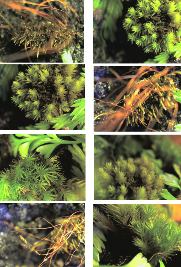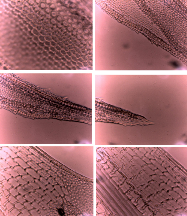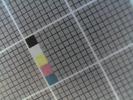First images taken at a lower resolution (960x720); for the microscope,
the optical axes are not yet well aligned : this is the first steps of a work in progres.
|
Hires Webcam for macrophotos; 960x720 |  |
| May, 14th : Michel Xhaard email me the new version of luvcview, supporting now to save pictures
with the highest resolution (1280x960) ! |
Hires Webcam for microphotos; 960x720 |  |
| First pictures taken at the highest resolution (1280x960), owing to the newest luvcview release |
the reference mid-gray grid background (white squares = 1 cm2), webcam objective heavily screwed off |
 |
|
the same grid background (black squares = 1mm2), at the printer wax drop level (Tektronix 850) : the webcam
objective is fully unscrewed, then gently screwed for 1/4 turn |
 |
|
a leaf of bryophyte (moss), seen with a microscope and the objective-less webcam |
 |
 (PDF)
(PDF)













